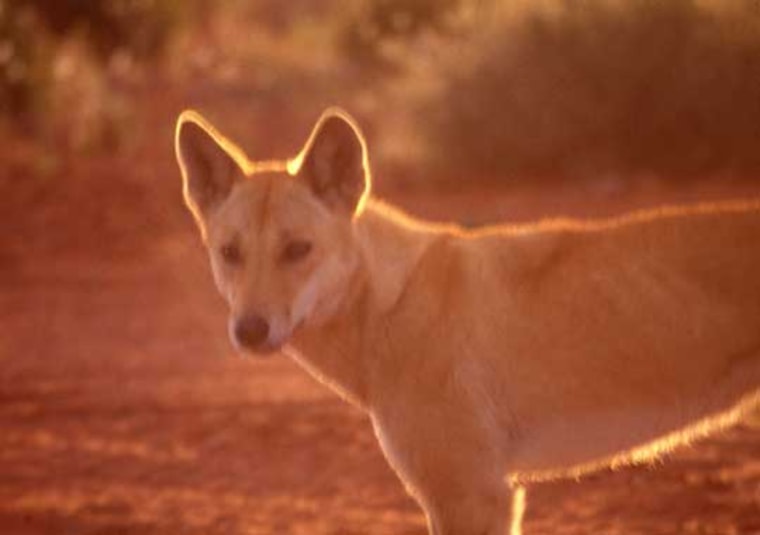The world's longest fence stretches for 5,000 kilometers (more than 3,000 miles) from one side of southern Australia to another. The fence was designed to keep sheep-eating dingoes out of a third of the country, but the barrier has had some other surprising consequences.
On the dingo-free side of the fence, according to a new study, overall biodiversity is actually lower than it is on the side where dingoes are free to roam. The research suggests that invasive predators, once they've established themselves, play an important role in the food web and might actually be good for conservation.
The finding could affect efforts to both control and reintroduce predators in other parts of the world, too, including wolves in the western United States.
"There's an idea that introduced predators are altogether bad and cause these catastrophic extinctions," said Mike Letnic, an ecologist at the University of Sydney in Australia. "Our results clearly show that this introduced predator species has a positive ecological role that is contrary to its classification as a pest."
Dingoes were introduced to Australia 5,000 years ago and promptly replaced the Tasmanian Wolf, a marsupial, as top predator. From 1900 to the 1960s, the country built a six-foot tall wire fence through deserts and mountains, from the southern coast to the northeast of Brisbane, to keep the dogs away from sheep and other livestock. Since then, ecosystems on either side of the fence have diverged in striking ways.
Some of those differences are obvious. There are noticeably more kangaroos, for example, inside the fence, where there are no dingoes, than there are outside the fence, where dingoes are plentiful and eager to eat the hopping marsupials.
During his years out in the field, Letnic also noticed other, more intangible differences.
"Something about areas with dingoes ... felt totally different," he said. "I worked long enough as a naturalist to feel there was something significant going on."
With his colleagues, Letnic spent two weeks surveying eight sites on both sides of the fence. Pairs of sites were located in similar landscapes.
At each site, the researchers used traps, counted tracks and scat, and watched for animals, including dingoes, kangaroos, foxes, cats, rabbits and rodents. The scientists also looked at dung samples to see what animals from each group were eating.
Their results, published in Proceedings of the Royal Society B, showed that there were indeed more kangaroos and foxes inside the fence, where dingoes weren't hunting them down.
With more of these mid-level predators around, though, there were fewer small mammals, such as the dusky-hopping mouse and a group of marsupials called dasyurids, which includes the Tasmanian Devil, the Numbat and the quoll.
Of 19 threatened native mammal species, the study identified 16 of them inside the fence that would be better off if dingoes were around. From the perspective of conservation, these findings suggest that dingoes might not be all bad, after all.
"We make value judgments all the time about all sorts of things," Letnic said. "Really, our value judgments are usually based on hunches, ideas, and strongly held beliefs that are not always true. ... It's what the animal actually does and what niche it fills that we need to think about before we fiddle with the abundance of any species."
In the western United States, wolves face a similar set of issues. Some people want to get rid of them. Others want to reintroduce them to places where they haven't lived in a long time. It's still not clear which plan is best.
"Scientists are just now discovering how important these top terrestrial predators are," said Bill Ripple, an ecologist at Oregon State University, Corvallis. "These predators can be crucial for maintaining functional ecosystems."
